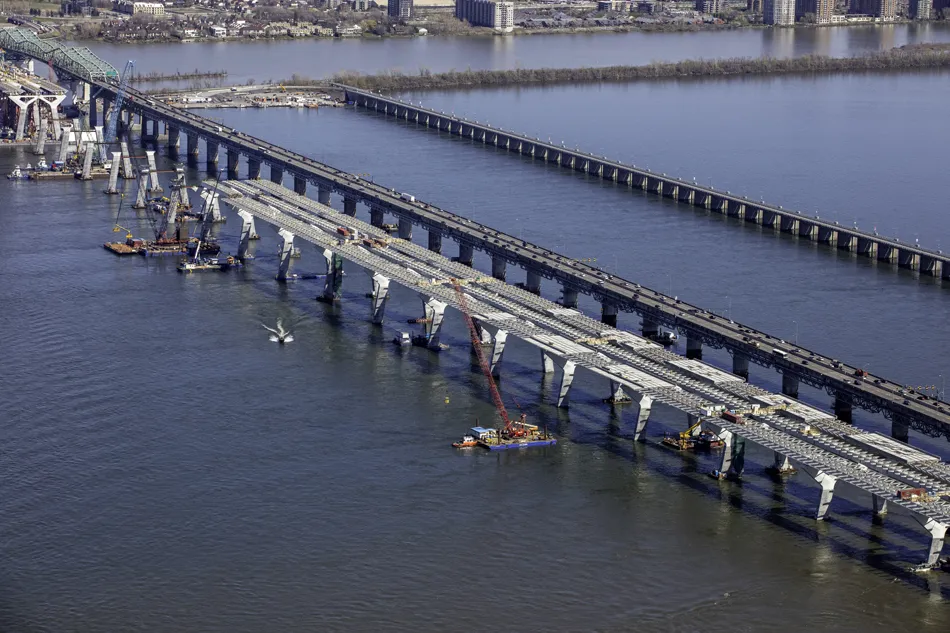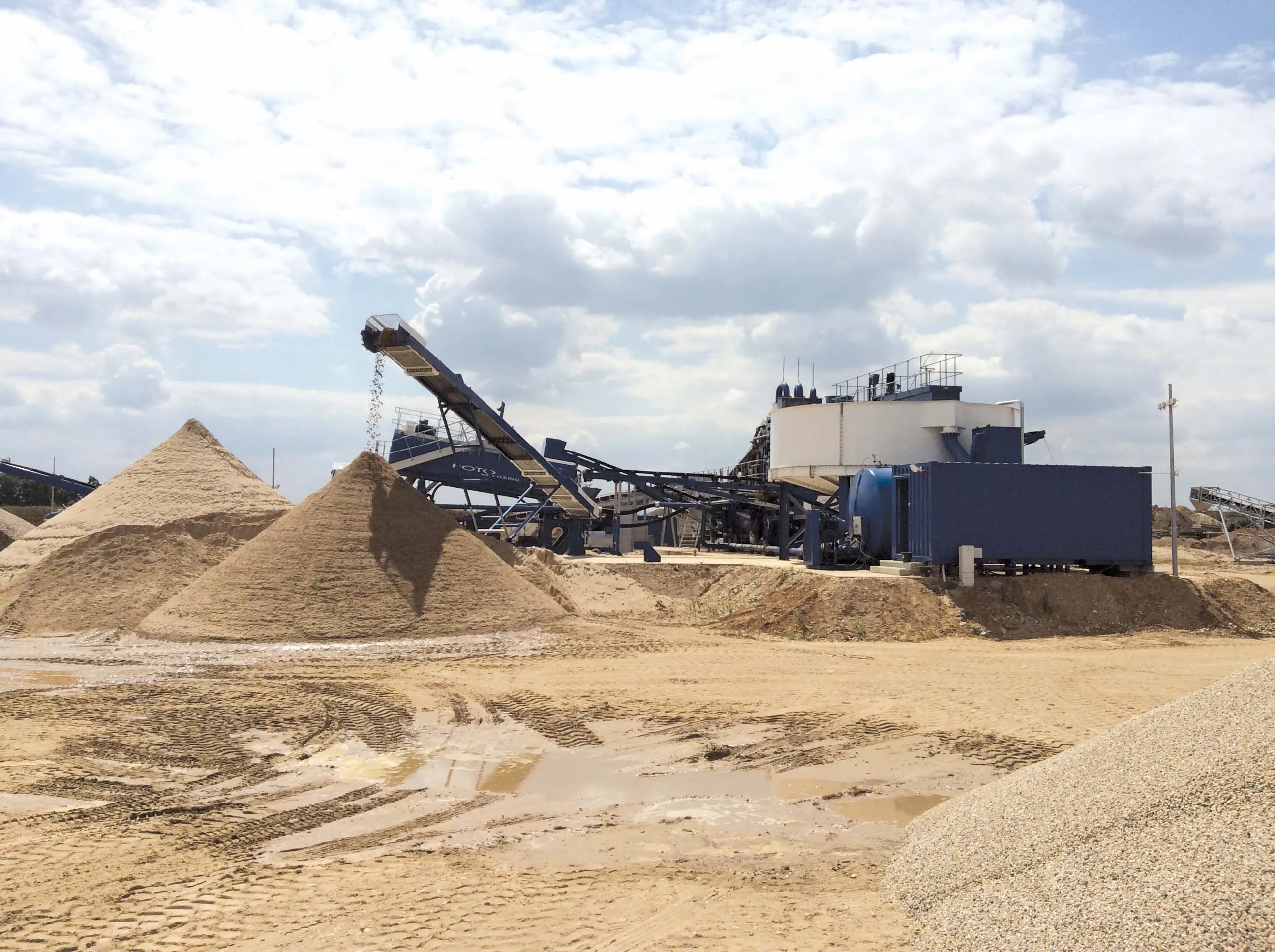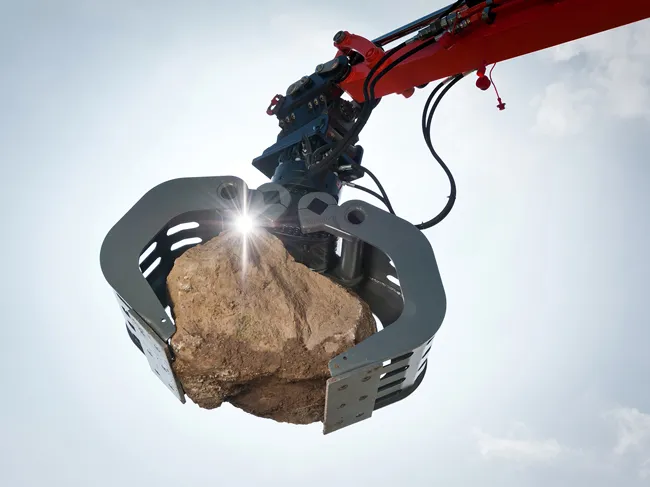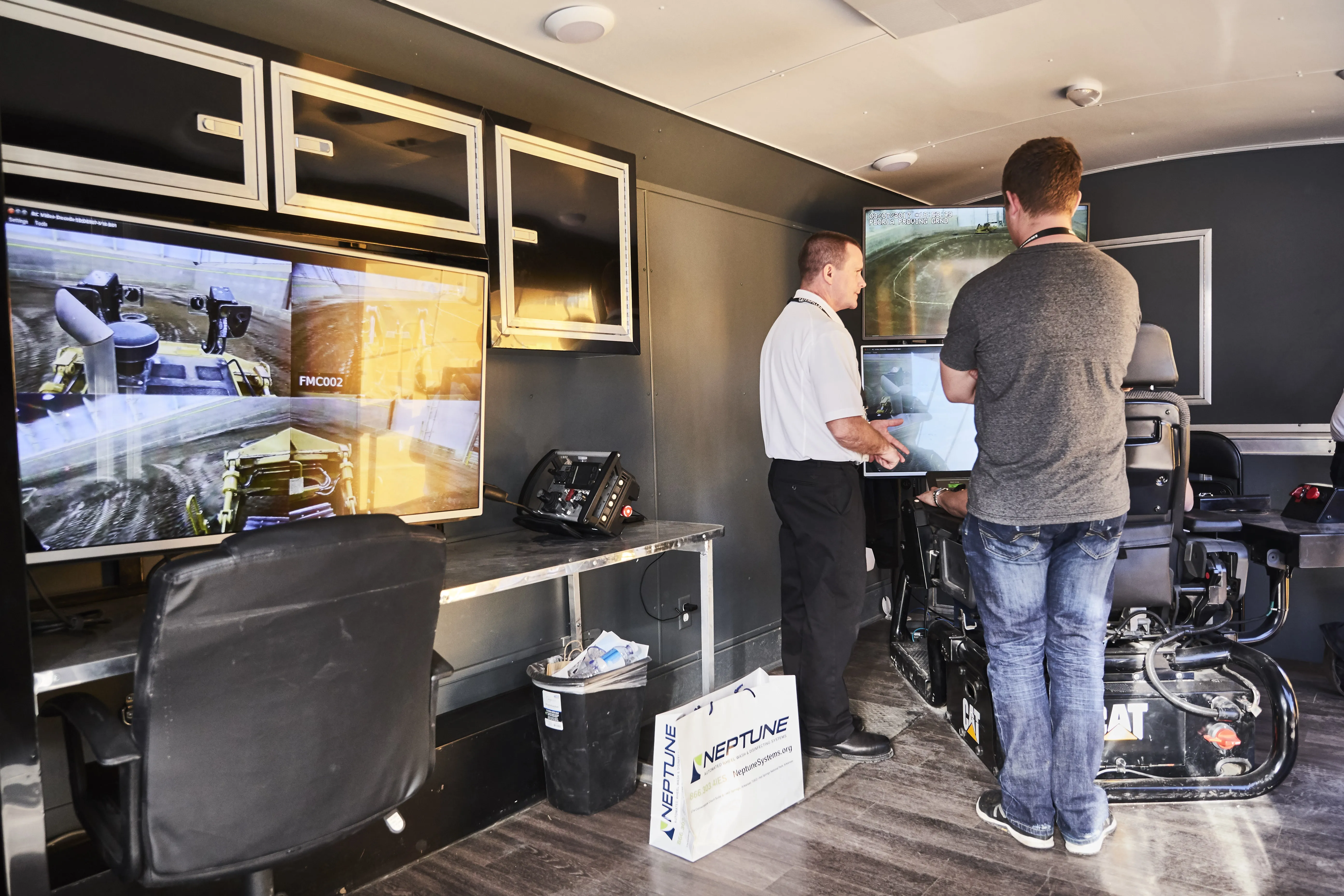The development of reliable hydraulic attachments has brought a revolution in demolition technology. The hydraulic breaker, pioneered by the Krupp and Montabert brands, has firmly taken hold with a huge range of manufacturers now offering machines. Hydraulic attachment specialists such as Atlas Copco, Indeco and Sandvik (with its Rammer brand) now offer a range of tools that can deliver high efficiency and safety in demolition work. Meanwhile, developments with smaller tools offer productive methods for rep
January 25, 2017
Read time: 5 mins
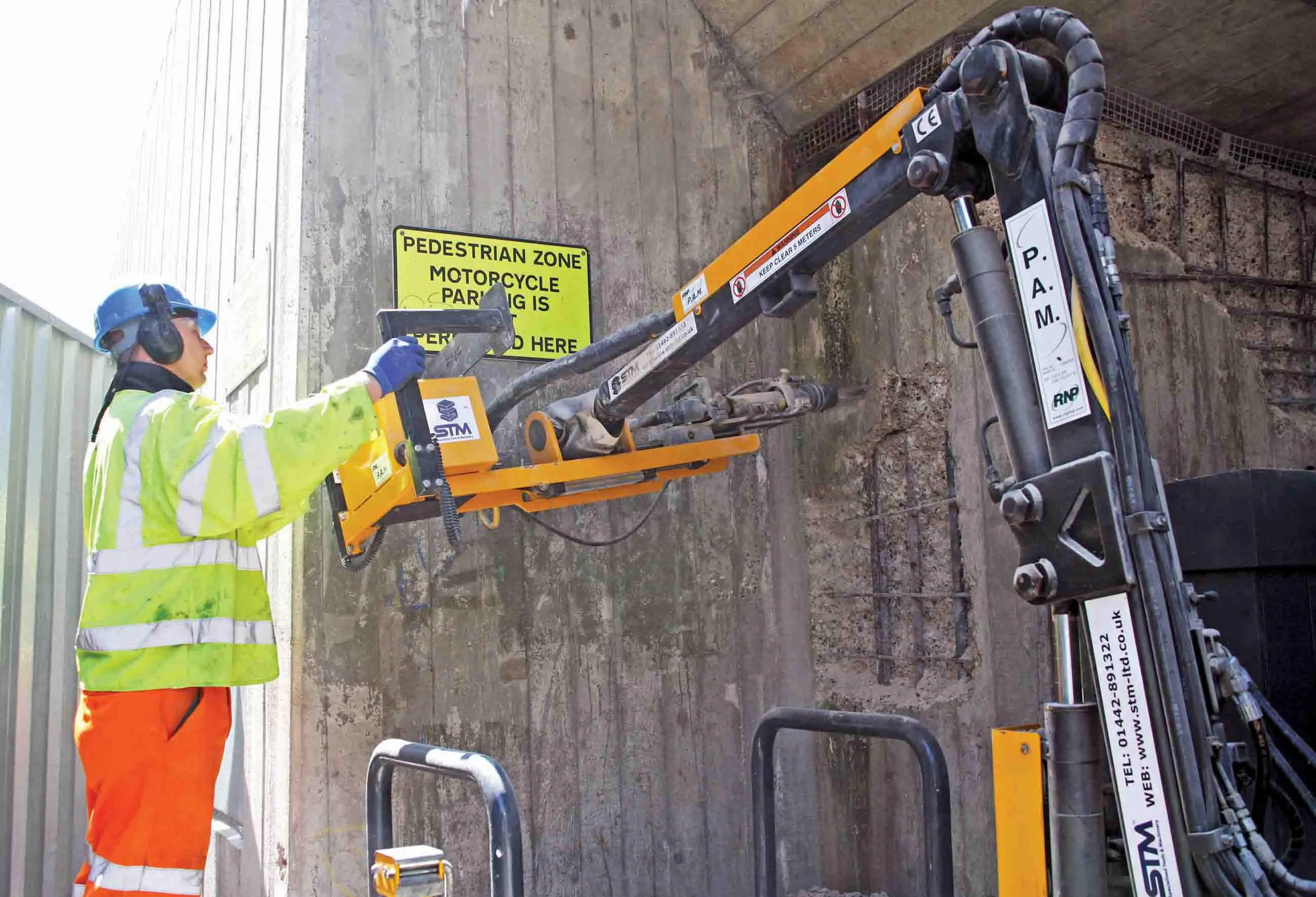
The development of reliable hydraulic attachments has brought a revolution in demolition technology.
The hydraulic breaker, pioneered by the Krupp and2396 Montabert brands, has firmly taken hold with a huge range of manufacturers now offering machines. Hydraulic attachment specialists such as 161 Atlas Copco, 237 Indeco and 325 Sandvik (with its 5076 Rammer brand) now offer a range of tools that can deliver high efficiency and safety in demolition work. Meanwhile, developments with smaller tools offer productive methods for repairing older structures by breaking out damaged areas.
Early breakers had a reputation for tearing themselves apart when blank firing or causing fast wear of carriers, so much so that contractors would often fit a hammer to an old excavator rather than risking a new machine. But times have changed and breakers are now more reliable and more long-lived than ever before, with new technologies that extend working life, cut vibration as well as wear and tear for the carrier and also reduce the risk of damage from blank firing. Performance has increased by leaps and bounds, while for demolition work, contractors can also opt for units that are much larger and more powerful than was practical in past decades.
At the same time, contractors can also buy hydraulic attachments suited for other important demolition tasks such as cutter, pulverisers and combi cutters. These further extend the range of capabilities for the demolition contractor, allowing much better levels of productivity, as well as safety, than was possible with the old-fashioned drop ball and crawler crane method, now almost close to extinction.
Using a fleet of excavators fitted with hydraulic attachments can prove highly productive with regard to breaking up old structures. In the UK, a specialist demolition contractor recently removed a redundant bridge over the busy M1 motorway. The Amac Group employed excavators fitted with hydraulic breakers and other attachments to break up the bridge in a single overnight possession in September 2016. With the debris also removed within the tight closure timescale, the motorway was then reopened the next morning to allow traffic to use the link.
This type of contract highlights the versatility of the hydraulic breaker and other attachments in delivering a controlled demolition job. Hydraulic attachments can be used in both demolition and deconstruction applications, on tunnels, bridges and roadways. The demolition work can break down materials such as asphalt, concrete and rebar, which can then be either recycled or taken to a landfill, although the market trends is towards the former rather than the latter. Deconstruction meanwhile involves dismantling and sorting materials for recycling or disposal. In both cases, contractors gain the advantage of greater productivity when they have the right tool for the job.
Hydraulic hammers are particularly productive for demolishing materials and can be used to break up some of the toughest structures. Pulverisers are used to crush and separate reinforced concrete from steel, suiting them to the demolition of columns in parking garages. These attachments can quickly chew through concrete and rebar and cleanly separate the rebar from concrete, suiting them to secondary demolition and sizing of reinforced concrete.
A cutter that can crush concrete and cut rebar will help boost productivity and reduce time spent on the job, while leaving materials that are broken out and easily sorted. These tools can be equipped with a wide range of jaws, such as for cutting general structural steels, separating steel from concrete, demolishing heavily reinforced concrete, or for cutting steel with scissor-like cutting heads.
One example where attachments have played an integral role in the success of a job was during a bridge project in Colorado, US. The Colorado Department of Transportation chose an Accelerated Bridge Construction, or ABC, approach to improve operations at Denver’s Pecos Street and I-70 interchange. Staker Parson Company had only four hours to demolish the old bridge and move a replacement bridge into place. In addition to the tight deadline, the existing bridge was still in good shape, which made it harder for the crews.
The demolition team used both cutters and hydraulic breakers to demolish the bridge. The cutters and breakers started in the middle of the bridge and worked outward. When the breakers hit rebar, the cutters were employed to shear through the bars and despite having only four hours to complete the job, the team finished by deadline, allowing the new bridge to be opened to traffic on schedule.
Milling cutters are suited to removing precise layers of asphalt, concrete or frozen ground in tunnels and trenches or on roadways for small repairs. This attachment can save contractors in material costs as the need only to remove the damaged or worn surface.
Matching the size of the attachment to the carrier is crucial and contractors have to find attachments that match the hydraulic flow. If the carrier cannot provide sufficient hydraulic power, the attachments will neither perform efficiently nor deliver productivity.
Contractor184 Colas is now making use of a novel positioner-activator-manipulator (PAM) system from 6097 Chicago Pneumatic. The system is being used for breaking out concrete on vertical and overhead applications on concrete structures, prior to carrying out repairs.
The bespoke assembly, featuring a Chicago Pneumatic CP4611 rivet buster and CP0022 rock drill, is firmly secured to an air-over-hydraulic powered two-piece arm that reduces or isolates vibrations, depending on the model of air tool, thus providing tough and reliable tools that allow for longer operation times.
This offers higher productivity than the traditional approach to concrete repairs and removal of employing hand-held electric breakers and chipping tools. Due to the risk of hand/arm vibration, conventional tools can only be operated for a short period of time, limiting productivity. But with the PAM system, there is no risk of hand/arm vibration and productivity can be optimised as a result.
Chicago Pneumatic’s CP4611 rivet buster, originally designed for removing rivets and other metal applications, is now being used as part of the PAM system for concrete demolition and bridge work, offering the same hitting power as a 30kg breaker but at only half the weight. The CP0022 pneumatic sinker drill is designed for drilling down vertically but when mounted on the PAM carrier, it allows operators to drill horizontally into walls and overhead in tunnels.
The hydraulic breaker, pioneered by the Krupp and
Early breakers had a reputation for tearing themselves apart when blank firing or causing fast wear of carriers, so much so that contractors would often fit a hammer to an old excavator rather than risking a new machine. But times have changed and breakers are now more reliable and more long-lived than ever before, with new technologies that extend working life, cut vibration as well as wear and tear for the carrier and also reduce the risk of damage from blank firing. Performance has increased by leaps and bounds, while for demolition work, contractors can also opt for units that are much larger and more powerful than was practical in past decades.
At the same time, contractors can also buy hydraulic attachments suited for other important demolition tasks such as cutter, pulverisers and combi cutters. These further extend the range of capabilities for the demolition contractor, allowing much better levels of productivity, as well as safety, than was possible with the old-fashioned drop ball and crawler crane method, now almost close to extinction.
Using a fleet of excavators fitted with hydraulic attachments can prove highly productive with regard to breaking up old structures. In the UK, a specialist demolition contractor recently removed a redundant bridge over the busy M1 motorway. The Amac Group employed excavators fitted with hydraulic breakers and other attachments to break up the bridge in a single overnight possession in September 2016. With the debris also removed within the tight closure timescale, the motorway was then reopened the next morning to allow traffic to use the link.
This type of contract highlights the versatility of the hydraulic breaker and other attachments in delivering a controlled demolition job. Hydraulic attachments can be used in both demolition and deconstruction applications, on tunnels, bridges and roadways. The demolition work can break down materials such as asphalt, concrete and rebar, which can then be either recycled or taken to a landfill, although the market trends is towards the former rather than the latter. Deconstruction meanwhile involves dismantling and sorting materials for recycling or disposal. In both cases, contractors gain the advantage of greater productivity when they have the right tool for the job.
Hydraulic hammers are particularly productive for demolishing materials and can be used to break up some of the toughest structures. Pulverisers are used to crush and separate reinforced concrete from steel, suiting them to the demolition of columns in parking garages. These attachments can quickly chew through concrete and rebar and cleanly separate the rebar from concrete, suiting them to secondary demolition and sizing of reinforced concrete.
A cutter that can crush concrete and cut rebar will help boost productivity and reduce time spent on the job, while leaving materials that are broken out and easily sorted. These tools can be equipped with a wide range of jaws, such as for cutting general structural steels, separating steel from concrete, demolishing heavily reinforced concrete, or for cutting steel with scissor-like cutting heads.
One example where attachments have played an integral role in the success of a job was during a bridge project in Colorado, US. The Colorado Department of Transportation chose an Accelerated Bridge Construction, or ABC, approach to improve operations at Denver’s Pecos Street and I-70 interchange. Staker Parson Company had only four hours to demolish the old bridge and move a replacement bridge into place. In addition to the tight deadline, the existing bridge was still in good shape, which made it harder for the crews.
The demolition team used both cutters and hydraulic breakers to demolish the bridge. The cutters and breakers started in the middle of the bridge and worked outward. When the breakers hit rebar, the cutters were employed to shear through the bars and despite having only four hours to complete the job, the team finished by deadline, allowing the new bridge to be opened to traffic on schedule.
Milling cutters are suited to removing precise layers of asphalt, concrete or frozen ground in tunnels and trenches or on roadways for small repairs. This attachment can save contractors in material costs as the need only to remove the damaged or worn surface.
Matching the size of the attachment to the carrier is crucial and contractors have to find attachments that match the hydraulic flow. If the carrier cannot provide sufficient hydraulic power, the attachments will neither perform efficiently nor deliver productivity.
Contractor
The bespoke assembly, featuring a Chicago Pneumatic CP4611 rivet buster and CP0022 rock drill, is firmly secured to an air-over-hydraulic powered two-piece arm that reduces or isolates vibrations, depending on the model of air tool, thus providing tough and reliable tools that allow for longer operation times.
This offers higher productivity than the traditional approach to concrete repairs and removal of employing hand-held electric breakers and chipping tools. Due to the risk of hand/arm vibration, conventional tools can only be operated for a short period of time, limiting productivity. But with the PAM system, there is no risk of hand/arm vibration and productivity can be optimised as a result.
Chicago Pneumatic’s CP4611 rivet buster, originally designed for removing rivets and other metal applications, is now being used as part of the PAM system for concrete demolition and bridge work, offering the same hitting power as a 30kg breaker but at only half the weight. The CP0022 pneumatic sinker drill is designed for drilling down vertically but when mounted on the PAM carrier, it allows operators to drill horizontally into walls and overhead in tunnels.


